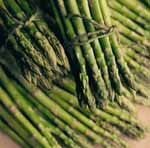Practical gardener
This week it's time to prune Weigelas, start protecting plants in the greenhouse and plant leeks, says our practical gardener

Pruning Weigela It’s up to you whether or not you prune your shrubs after they’ve finished flowering, but eventually, they will outgrow either themselves or their position. Most Weigelas can be pruned now. The tall, upright Bristol Ruby is now not often seen in plant centres, as it can grow as big as 6½ft too large for many gardens.
The more popular Weigala florida Florida Variegata, with its pale-pink flowers and creamy-yellow foliage, is slower growing, and reaches to only about 5ft. Both will respond to a light prune, to tidy the shape or, as soon as flowering is over, remove all the flowering stems. Flower arrangers could coppice Florida Variegata by pruning it hard every winter; there will be gorgeous long stems for use in arrangements, but at the cost of sacrificing the flowers. Weigala Florida Foliis Purpureis is shorter and more compact, growing up to 4ft; it can be left for longer, but still responds to hard pruning after flowering.
Greenhouse shading As the summer is now on its way, you’ll need to protect the plants in your greenhouse from the sun by shading them. If you have the luxury of automatic vents, they will help, but even so, the midday sun can scorch or dry tender plants if they’re not in the shade. External or internal blinds are easy, too, as they can be raised or lowered as the temperature fluctuates. Painting proprietary emulsions (such as Coolglass) on the outside is cost-effective, but a chore, and it stays until you remove it at the end of the season. Fleece is normally used for plant protection on the ground, but if you pin or clip it to the inside of the greenhouse and drape it down, it creates good shade.
You can easily gather it up and tie it back to the clips to let the light in on dull days. You can also do this to the roof of the greenhouse, but it takes more work. Planting leeks If you’ve grown your leeks in pots, they should be ready to plant out now. Take them out and dunk them in a bucket of water to remove the compost, which will make them simpler to separate. With the bases of the leeks gathered together, cut back the roots to an inch or less for easier planting this process is known as ‘tailing’. Years ago, market-bought leeks would have been ‘topped and tailed’ where the leaves are cut back too, so that the plants were all a regular 6in high (there’s nothing to be gained by doing this). Plant the leeks with a dibber in deeply worked soil and fill the hole with water. Regular hoeing will gradually fill the hole with loose soil.
Asparagus
Resist cutting your asparagus spears after the middle of June so that the plants can develop their ferny foliage and build up next year’s reserves. Now is a good time to help strengthen the crowns by applying a general fertiliser, such as Fish, Blood & Bone. Don’t let the stems get blown about and rocked by the wind it can make holes at the base of the stems where water can lie, leading to crown rot. Philip Maddison is head gardener at Harrington Hall, Lincolnshire (www.harringtonhallgardens.co.uk)
Sign up for the Country Life Newsletter
Exquisite houses, the beauty of Nature, and how to get the most from your life, straight to your inbox.
-
 Five of the National Trust's most outstanding paintings, as chosen by the curators who care for the charity’s world-class collection
Five of the National Trust's most outstanding paintings, as chosen by the curators who care for the charity’s world-class collectionAs The National Trust celebrates its 130th anniversary, we asked five of their curators to choose a key artwork from the charity's huge collection.
By Rosie Paterson Published
-
 Interiors that inspire in a four-bedroom cottage in Hertfordshire
Interiors that inspire in a four-bedroom cottage in HertfordshireCome for the Grade II-listed family home an hour from Central London, stay for the interior-design inspiration.
By James Fisher Last updated